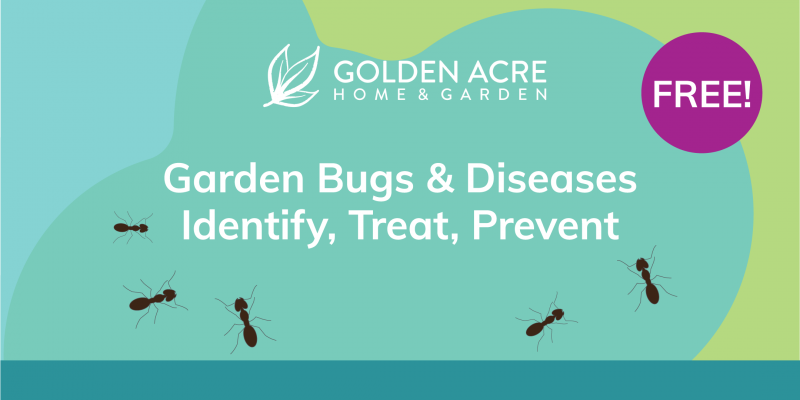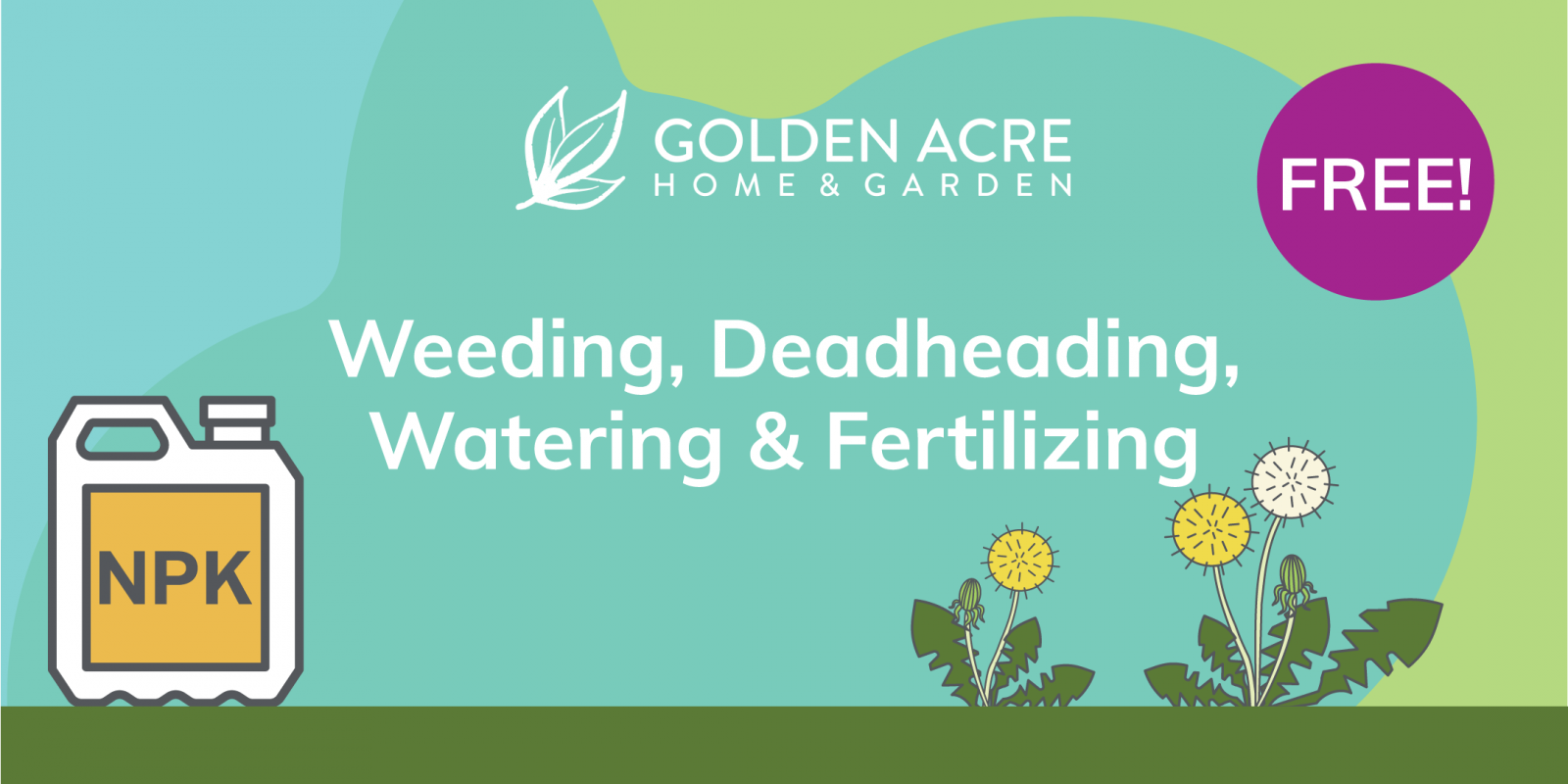Garden Maintenance
Weeding
Everyone’s favourite garden chore, right? Weeds are unwanted plants. In Alberta, these can be the dandelion, creeping bell, chickweed, etc. While they are beautiful and are often indigenous to our region, they can be in direct competition with cultivated plants, pathways, and structures. Sometimes, we come in contact with noxious weeds which grow rapidly and cause damage to crops/stock/people. At the end of the day, we are looking to eliminate, or at least limit, the weeds in our garden.
So how do we do it? By far, the best way to get rid of weeds is with the use of a tool. That can be pulling with our hands, digging with a shovel, breaking up the soil with a cultivator and turning them back into the garden bed. Let’s pause and talk about that last point. You may be asking why we should mix weeds back into the soil. This should only be considered for the little weeds. You should always remove the larger weeds. But, you have to weed all season long and getting every little weed can be overwhelming. Garden burnout, right? By turning them back into the soil, they can’t photosynthesize and get bigger, and they end up nourishing the soil!
There are many tools to assist you including telescopic cultivators and trowels to help reach the tough weeds.
What about chemical sprays? Spraying weeds can be effective, and there are many products on the market that you can use. However, use caution when selecting a spray as some will wipe out an entire perennial garden or lawn. They can also be hazardous to our families and the food that we harvest from our gardens. Make sure you’re wearing protective clothing when working with chemicals and always follow manufacturers directions. Some regions don’t allow chemicals, so make sure to check in with your local laws before applying weed control products. Here are some chemicals and they’re uses:
- Round-Up | LINK
- Non-selective chemical which means it will wipe out everything it touches. If you’re trying to kill a lawn, or a weed in the middle of a cement drive way, this is it. Make sure you’re not applying on a super windy day or before a rain store. Product will transfer to areas you don’t want it to!
- Killex | LINK
- Selective chemical which means it is safe for lawns and will target certain weeds. Make sure to read directions before apply to vegetable beds as some require a certain amount of time before harvesting.
- Wilson WeedOut | LINK
- Used for spot treatments. You’ll see results in 24hrs, and weeds will die in 4-8 weeks. Selective chemical which means it is safe for lawns and will target certain weeds. Make sure to read directions before apply to vegetable beds as some require a certain amount of time before harvesting.
- Scott’s Weed B Gon | LINK
- Selective chemical which means it is safe for lawns and will target certain weeds. Iron oxidation will cause weeds to dry up, turn black, and die. Make sure to read directions before apply to vegetable beds as some require a certain amount of time before harvesting.
Can you prevent weeds? Not exactly… but there are things you can do that will help! Weeds are looking for yummy soil, water, and sunlight.
- Selective Watering
- Target your watering with instead of spraying the entire garden bed. This will dry out the soil in between plants and prevent weeds from growing. This is more for garden beds than lawns.
- Landscape Fabric | LINK
- You can apply this on top of the soil to discourage photosynthesis in weeds. Be aware that you may need a few layers, and will need to reapply 5-20 years later depending on the manufacturer. The older it is, the harder it is to replace. Use fabric pins to anchor the fabric into the ground.
- Mulching | LINK
- Applying a couple inches of mulch will also discourage photosynthesis in weeds. The smaller sized chunks, the better. Gardeners will usually apply landscape fabric and mulch on top for extra protection, but that’s optional. Again, you may need to replace the mulch if it fades over the years.
- Soil Solarization | LINK
- Use the sun to choke out weeks from an empty garden bed. Cover it with clear plastic for 4-6 weeks during a hot dry period. This should only be done at the beginning of the season or if you’re planning on starting from scratch and eliminating everything. Be aware that this will also eliminate bugs, even beneficial ones like lady bugs.
Cultivating Soil
Think about all the water that compacts the soil surface throughout the growing season. Fluffing up the soil can help break it up, increase water and nutrient retention, and helps with gas exchange. Cultivating soil can also help with weeding.
When cultivating your soil, use your favourite hand tool and disrupt the top layer of soil. Go gently around existing plants because you never know where the roots are living. Add soil amendments like worm castings, volcanic dust, peat moss, compost, etc. See our previous blog post for more information on amending. You can also use this opportunity to weed! Remove big weeds and turn smaller weeds back into the garden bed. Make sure to leave the soil level around existing plants.
Pruning
Pruners becomes a lighter job as the growing season goes on. At this point, we’re talking about desirable pruning, like Cotoneaster hedges to keep them safe, healthy, and looking clean. Take this time to remove any dead leaves. Some years, like this one, you may see your region blessed with an early and hot spring. In Calgary, we’ve had challenges with trees and shrubs underperforming and not “leafing out”. If you see this happening, there are a couple things you can check:
- Scratch a little bit of the bar off. If it’s green, it’s alive and needs a bit more time, sunlight, and water. If it’s not green, prune it off.
- Look for little buds.
- Look for pests. If you see evidence of questionable visitors, take a photo and bring that in to your local garden centre for identification and advice.
- Look at how it’s being watered. Perhaps giving that one side a bit more water to encourage faster growth.
Deadheading
This is hands down Colin and Brandi’s favourite garden chore! Deadheading is the removal of finished blooms from ornamental (not edible) plants to encourage overall health and appearance. Deadheading can actually encourage flowers well into the autumn! You can do this on annuals and perennials. The trick though, is to remove the seed pod and not just the petals. If you have a plant that has long stems, like a daylily, you may want to remove the entire stem as well. Again, do not deadhead plants that produce fruits and veggies. Tomatoes come from flowers!
How to Deadhead:
The best plant to demonstrate this with, is the petunia. Most gardeners will pull off the petals. The problem is, you haven’t removed the seed pod, so energy is still going to the production of a seed and not new flowers. You’ve basically just removed its clothing! With a pair of pruners or garden scissors, snip off at the stem and compost. Look at the photos below. Do you see that long piece coming out of the finished bloom? That’s where the pollination happens. The seed pod is there at the bottom. That’s why it’s important to remove everything. If you need help deadheading a specific plant, send us an email! info@goldenacre.ca
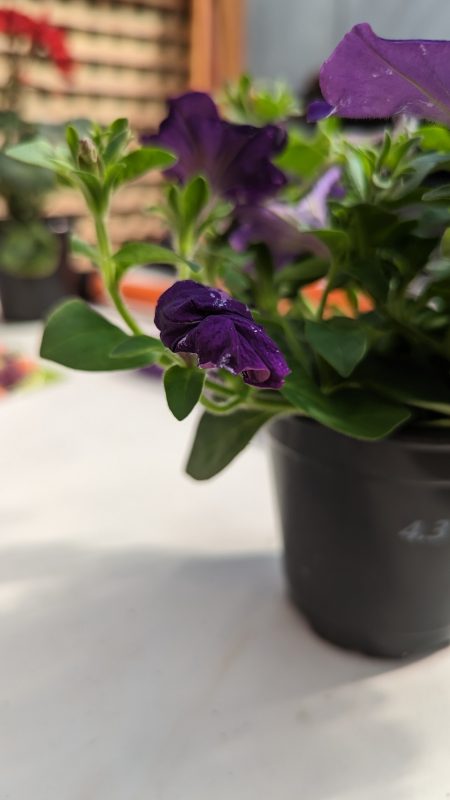
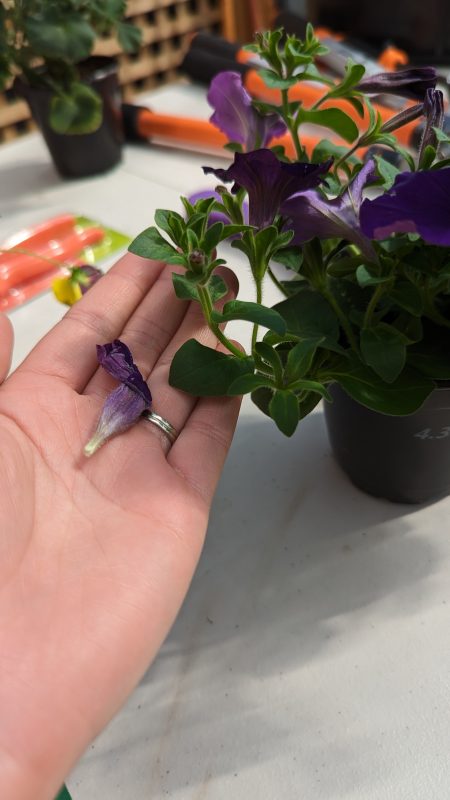
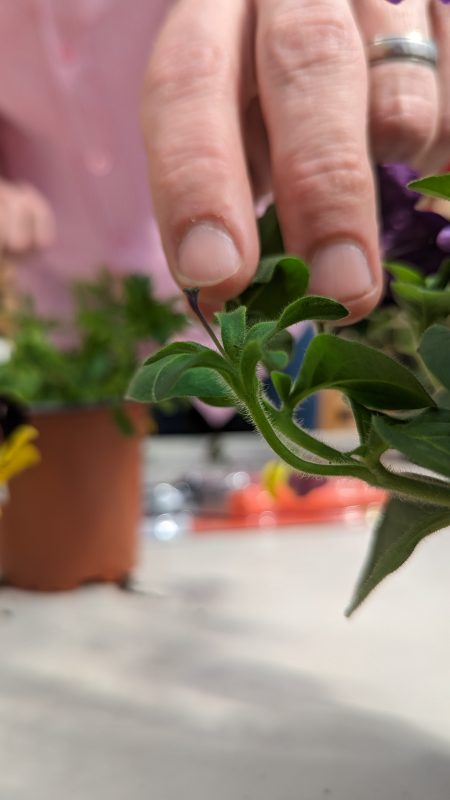
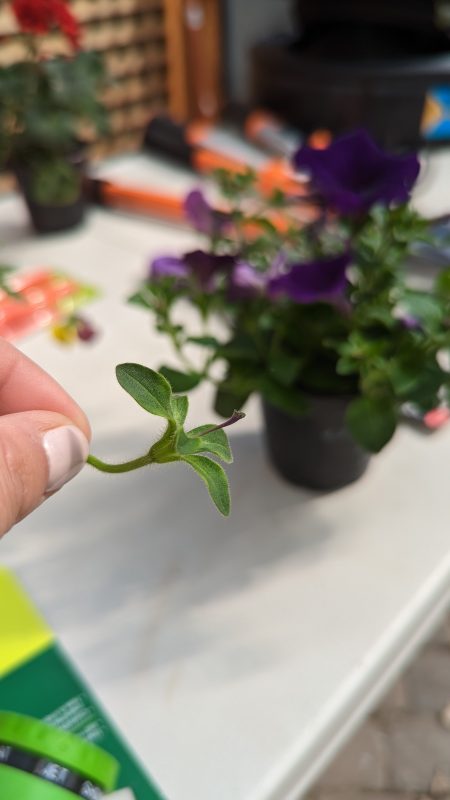

Fertilizer
Raise your hand if you’re confused by fertilizer. I was too, but it gets easier the more you talk about it and ask questions. I mean, there’s an entire wall dedicated to fertilizer at Golden Acre… two if you count the indoor fertilizers and cannabis fertilizers! We talked about this a bit today, but Colin goes more in depth on the latest episode of the Helpful Gardeners Podcast which debuts Sunday at 8AM MT.
We get asked a lot if fertilizer is worth the investment. If Colin had to choose between fertilizing or amending soil, he’s amend it. BUT, if he didn’t have to choose, then he’d do both. I know we sell fertilizer and therefore have some bias, but we honestly stand behind it. Colin has been using fertilizer since his days as a landscaper, and even went as far as to stick to a particular brand. He uses fertilizer both inside and outside. You’ll learn more about that in the podcast! If there’s one piece of advice we could pass along to you when approaching a “fertilizer wall” is to not get hung up on the numbers. Here’s a simple roadmap you can follow to pick the right fertilizer for your needs:
-
Is growing an organic garden important to you?
Organic fertilizers will have smaller numbers. Inorganic fertilizers have higher numbers and may offer a higher success rate. There’s no right or wrong here. It’s what you want out of your garden.
-
Now, what are you growing?
- Flowers
- Veggies
- Tomatoes (Add Calcium to prevent blossom end rot)
- Lawn
- A little bit of everything… AKA All Purpose
-
Finally, what growing medium works best for your lifestyle?
- Water Soluble >>> Mix a concentrated liquid or dry mix with water. Offers more control and even fertilizing.
- Slow Release >>> Sprinkle onto the soil surface throughout the season. Good for a busy schedule.
- Flowers
- Trees & Shrubs
- Veggies
- General Purpose
- Lawn
- How to apply slow release fertilizer >>>> WATCH LINK
- Fertilizer Spikes >>> Stick into the ground and remove in the fall. One and done, but dependent on water reaching the spike.
Make sure to follow manufacturers recommendations. Do not over fertilize! If you miss a day, or week, feed your plants the same amount as you have been… do not double up the dosage. For annuals, continue fertilizing until the fall. For perennials, continue fertilizing until the end of summer so plants have time to wind down for the winter.
Curious about what the numbers are? They simply represents a percentage of the three most important macronutrients that plants needs
- N – Nitrogen. Above ground, leafy growth.
- P – Phosphorous. Root development and seed/fruit formation
- K – Potassium. Regulate roots and top growth. Builds health and resistance.
Flower Bed Edging
Edging can help with weeds and add an aesthetic clear line to your garden bed. There are lots of options for edging materials like plastic, stone, or mulch. Adding edging can also help with lawn cutting!
Watering
This is essential especially for high production plants that require lots of energy for fruit and flowers. Underwatering can result in weak plants and low quality crop. Overwatering can result in pampered plants unable to withstand adverse conditions. Watch for the hot hot hot days ahead. You may need to water up to three times a day! A big sign that your plant needs water is its leaves start drooping.
You can continue watering until the fall, especially for your annual flowers. If you’ve done your fertilizing and deadheading, then you’ll most likely still have flowers at this stage!
Resources
More Detailed PowerPoint Presentation | GA Webinar – Garden Bed Maintenance
Encore Video Presentation | Coming soon
Next Webinar | Garden Bugs & Diseases | Jun 3, 2023
